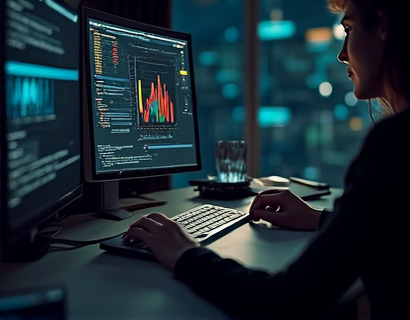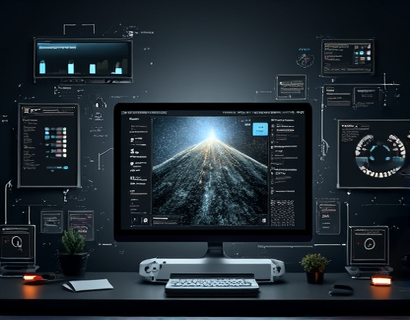Unlocking the Potential: A Comprehensive Guide to Exploring Unique Digital Assets for Enthusiasts and Collectors
In the rapidly evolving digital age, the concept of ownership and collectibility has transcended physical boundaries, giving rise to a new frontier: digital assets. This guide serves as an exhaustive resource for enthusiasts and collectors eager to delve into the world of unique digital assets, offering insights into their value, diversity, and potential. From digital art and collectibles to virtual real estate and beyond, this comprehensive exploration aims to equip readers with the knowledge to navigate, appreciate, and engage with this burgeoning landscape.
Understanding Digital Assets
Digital assets encompass a wide range of items that exist in digital form and hold value. These can be categorized into several types, each with its own unique characteristics and appeal. At the forefront are digital art and collectibles, which include NFTs (Non-Fungible Tokens) that represent ownership of unique digital items such as artwork, music, and videos. These tokens leverage blockchain technology to ensure authenticity and scarcity, making them highly sought after by collectors.
Beyond art and collectibles, virtual real estate represents another significant category. This includes digital land, properties, and spaces within virtual worlds and games. As virtual environments become increasingly sophisticated and immersive, the value of digital real estate is rising, attracting investors and enthusiasts who see potential in these emerging digital frontiers.
Exploring Digital Art and NFTs
Digital art has revolutionized the way we perceive and own creativity. NFTs have become the primary means through which digital art is bought, sold, and collected. Each NFT is a unique token on the blockchain, verifying the ownership and authenticity of the digital item it represents. This technology ensures that even though the digital file itself can be replicated, the ownership and provenance are secure and verifiable.
The market for digital art and NFTs has seen eExpansive growth, with platforms like OpenSea and Rarible leading the way. These platforms provide artists with a direct channel to their audience, bypassing traditional galleries and intermediaries. Collectors, in turn, gain access to a global market where they can discover and purchase unique digital pieces. The value of these assets can fluctuate based on demand, artist reputation, and cultural relevance, making them a dynamic and exciting investment opportunity.
Virtual Real Estate: A New Frontier
Virtual real estate is an emerging sector that combines the concepts of digital ownership with the growing popularity of virtual worlds and metaverses. These digital spaces offer a new dimension for ownership, where users can purchase, develop, and monetize virtual land and properties. Platforms like Decentraland and Sandbox have gained traction, providing users with the tools to create and interact in immersive digital environments.
The potential for virtual real estate is vast, with applications ranging from gaming and entertainment to education and commerce. Investors and collectors are drawn to the idea of owning a piece of the future, where virtual properties could become as valuable as their physical counterparts. However, this space is still in its infancy, and understanding the underlying technology, such as blockchain and smart contracts, is crucial for making informed decisions.
Other Unique Digital Assets
Beyond art and real estate, the world of digital assets includes a diverse array of items that cater to various interests. Digital collectibles, for instance, encompass a wide range of items such as virtual pets, in-game items, and limited edition digital objects. These assets often come with their own ecosystems and communities, fostering engagement and value among collectors.
Digital music and audio assets are another exciting area, where artists can release exclusive tracks or albums as NFTs. This not only ensures ownership and authenticity but also provides a new revenue stream for creators. Similarly, digital books and literature can be tokenized, offering readers unique editions and experiences that go beyond traditional print formats.
Engaging with the Digital Asset Community
For enthusiasts and collectors looking to dive deeper into the world of digital assets, community engagement is invaluable. Online forums, social media groups, and dedicated platforms provide spaces to connect with like-minded individuals, share knowledge, and stay updated on the latest trends and opportunities. Participating in these communities can enhance your understanding of the market dynamics, help you discover new assets, and even lead to collaborative projects and investments.
Attending virtual events, webinars, and conferences is also a great way to expand your network and gain insights from industry experts. These events often feature panels, workshops, and Q&A sessions that cover a wide range of topics, from the technical aspects of blockchain and NFTs to the cultural and economic implications of digital assets.
Investing Wisely in Digital Assets
While the potential for growth in the digital asset market is significant, it is essential to approach investments with caution and thorough research. The digital asset space is highly speculative, and values can be influenced by a multitude of factors, including market sentiment, technological advancements, and regulatory changes.
Before investing, it is crucial to understand the underlying technology and the specific asset you are interested in. For NFTs, consider the artist's reputation, the rarity of the token, and the demand within the community. For virtual real estate, evaluate the platform's growth potential, the utility of the property, and the overall health of the virtual world's ecosystem.
Diversification is key in any investment strategy, and this holds true for digital assets as well. Spreading your investments across different types of assets can help mitigate risk and potentially enhance returns. Additionally, keeping an eye on regulatory developments is important, as governments around the world are beginning to address the legal and tax implications of digital assets.
Future Trends in Digital Assets
The future of digital assets is promising, with several trends poised to shape the landscape. One significant development is the integration of digital assets into mainstream finance, with traditional institutions increasingly recognizing the value and potential of NFTs and other digital tokens. This trend is likely to bring greater legitimacy and accessibility to the market, attracting a broader audience.
Technological advancements, such as improved blockchain scalability and interoperability, will enhance the user experience and open up new possibilities for asset creation and trading. The convergence of digital assets with augmented reality (AR) and virtual reality (VR) is also on the horizon, promising more immersive and interactive experiences for users.
Sustainability is another emerging trend, with the environmental impact of blockchain technology becoming a focal point. Efforts to develop more eco-friendly consensus mechanisms and sustainable blockchain solutions will play a crucial role in the long-term viability of the digital asset ecosystem.
Conclusion
The world of digital assets offers a wealth of opportunities for enthusiasts and collectors willing to explore and engage with this innovative space. From digital art and NFTs to virtual real estate and beyond, the diversity and potential of these assets are vast. By staying informed, connecting with the community, and approaching investments wisely, individuals can navigate this exciting frontier with confidence and enthusiasm. As the digital asset landscape continues to evolve, one thing is certain: the future holds endless possibilities for those who dare to explore.









































